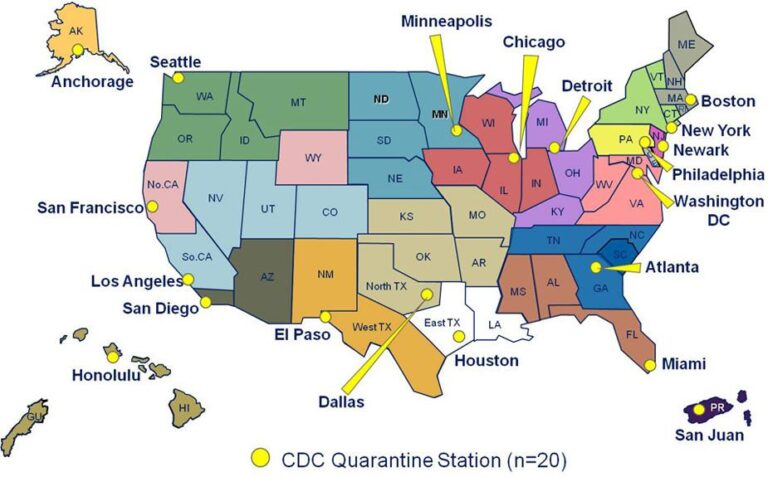Understanding the Low Risk of Ebola Spread in the United States
Why Ebola Transmission Is Unlikely to Escalate in the U.S.
The recent identification of the first Ebola case within the United States has naturally caused concern among the public. Nevertheless, infectious disease experts and health authorities stress that the probability of a significant outbreak remains very low. This reassurance is grounded in the virus’s transmission characteristics and the country’s preparedness measures.
Ebola virus spreads exclusively through direct contact with the bodily fluids of symptomatic individuals, such as blood, saliva, or sweat. Unlike respiratory viruses like influenza or COVID-19, Ebola is not airborne and cannot be contracted through casual contact or touching contaminated surfaces. This means routine activities—such as grocery shopping, using public transportation, or attending work—pose minimal risk to the general population.
- Strict containment procedures: Hospitals across the nation have implemented rigorous isolation and infection control protocols to prevent in-hospital transmission.
- Comprehensive contact tracing: Health officials are actively identifying and monitoring anyone who has had close exposure to the infected individual.
- Public education initiatives: Ongoing campaigns inform citizens about Ebola symptoms and preventive measures without inciting fear.
| Mode of Transmission | Risk Level in the U.S. |
|---|---|
| Touching Contaminated Surfaces | Extremely Low |
| Direct Contact with Infected Fluids | Low (mitigated by safety protocols) |
| Airborne Spread | None |
| Exposure in Healthcare Settings | Minimal (due to strict PPE use) |
Advanced Medical Protocols Safeguard Against Ebola Transmission
Healthcare institutions nationwide are equipped with cutting-edge procedures tailored to detect, isolate, and manage infectious diseases like Ebola. Medical staff undergo continuous training to uphold stringent safety standards, ensuring both patient and provider protection.
- Swift diagnostic testing: Ebola can be confirmed within hours, enabling rapid response.
- Dedicated isolation units: Facilities maintain specialized wards to contain infected patients securely.
- Extensive contact monitoring: Close contacts are tracked meticulously to prevent further spread.
These efforts are supported by federal agencies such as the Centers for Disease Control and Prevention (CDC), which deploy rapid response teams and maintain vigilant surveillance. This multi-tiered defense system significantly lowers the chance of an uncontrolled outbreak.
| Protocol | Objective | Implementation Status |
|---|---|---|
| Personal Protective Equipment (PPE) | Shield healthcare workers from infection | Fully Operational |
| Isolation Facilities | Securely house infected individuals | Active Nationwide |
| Emergency Response Teams | Rapidly address emerging cases | Ready for Deployment |
Public Health Strategies to Prevent Ebola Spread
Following the detection of the initial Ebola case, public health authorities have mobilized comprehensive measures to halt transmission. These include rigorous screening at points of entry, enhanced training for healthcare personnel, and meticulous contact tracing efforts.
The CDC has dispatched specialized teams to conduct thorough investigations and ensure immediate isolation of symptomatic individuals. Transparent communication remains a priority to combat misinformation and maintain public trust.
- Rapid testing capabilities: Facilitate early detection of new cases.
- Stockpiling protective gear: Ensures frontline workers remain safeguarded.
- Community outreach: Educates the public on recognizing symptoms and transmission prevention.
- Global collaboration: Shares data and resources with international partners to monitor worldwide trends.
| Preventive Action | Purpose |
|---|---|
| Contact Tracing | Break transmission chains swiftly |
| Airport Health Screenings | Identify symptomatic travelers early |
| Healthcare Worker Training | Reduce infection risk among staff |
| Public Information Sessions | Maintain community awareness and calm |
How You Can Stay Safe and Well-Informed
Accessing accurate information from trusted sources is essential. Rely on updates from official organizations such as the CDC and the World Health Organization (WHO). Avoid unverified social media content and sensational news that may cause unnecessary fear.
- Maintain good hygiene: Regular handwashing with soap and water is the most effective preventive measure.
- Steer clear of bodily fluids: Avoid direct contact with anyone showing symptoms or known to be infected.
- Recognize symptoms: Be aware that Ebola symptoms can resemble those of common illnesses, so seek medical advice if concerned.
Being informed empowers you to take appropriate precautions without succumbing to panic. The healthcare system is well-prepared, and strict protocols are in place to prevent widespread transmission. By following official guidance, you contribute to community safety and help maintain calm.
| Recommended Practice | Reason |
|---|---|
| Frequent Handwashing | Eliminates potential virus particles |
| Following Official Updates | Prevents misinformation and undue anxiety |
| Limiting Non-Essential Travel | Reduces exposure risk during outbreaks |
Final Thoughts
While the confirmation of Ebola within the United States understandably raises concerns, experts agree that widespread panic is unnecessary. The combination of the virus’s transmission characteristics, stringent healthcare protocols, and proactive public health responses significantly diminishes the likelihood of a large-scale outbreak. Staying informed through credible sources and adhering to recommended precautions remain vital as authorities continue to manage the situation effectively.







